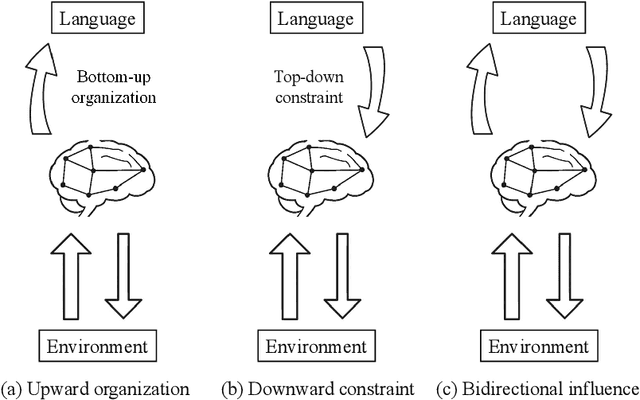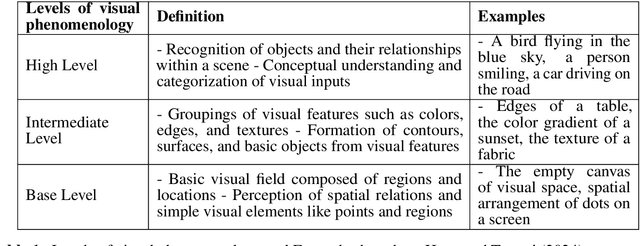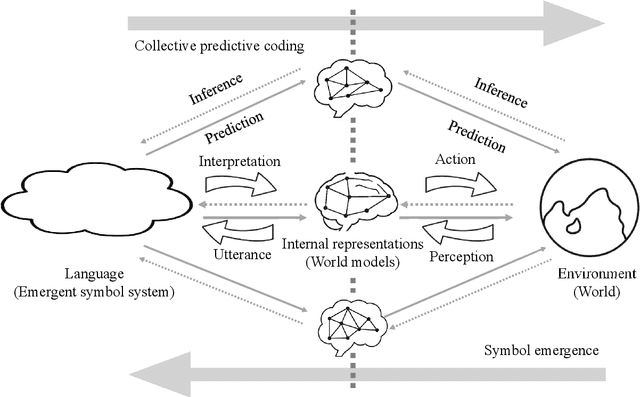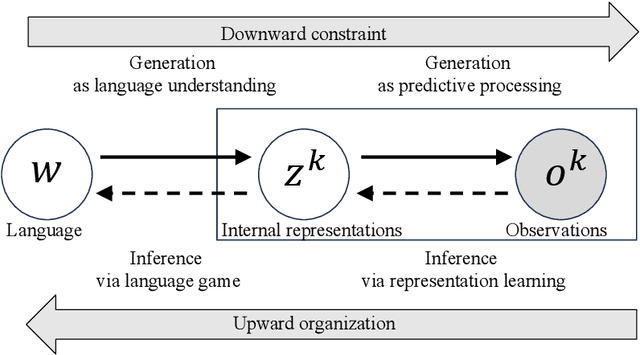Naotsugu Tsuchiya
Constructive Approach to Bidirectional Causation between Qualia Structure and Language Emergence
Sep 14, 2024



Abstract:This paper presents a novel perspective on the bidirectional causation between language emergence and relational structure of subjective experiences, termed qualia structure, and lays out the constructive approach to the intricate dependency between the two. We hypothesize that languages with distributional semantics, e.g., syntactic-semantic structures, may have emerged through the process of aligning internal representations among individuals, and such alignment of internal representations facilitates more structured language. This mutual dependency is suggested by the recent advancements in AI and symbol emergence robotics, and collective predictive coding (CPC) hypothesis, in particular. Computational studies show that neural network-based language models form systematically structured internal representations, and multimodal language models can share representations between language and perceptual information. This perspective suggests that language emergence serves not only as a mechanism creating a communication tool but also as a mechanism for allowing people to realize shared understanding of qualitative experiences. The paper discusses the implications of this bidirectional causation in the context of consciousness studies, linguistics, and cognitive science, and outlines future constructive research directions to further explore this dynamic relationship between language emergence and qualia structure.
Unifying Pairwise Interactions in Complex Dynamics
Jan 28, 2022Abstract:Scientists have developed hundreds of techniques to measure the interactions between pairs of processes in complex systems. But these computational methods -- from correlation coefficients to causal inference -- rely on distinct quantitative theories that remain largely disconnected. Here we introduce a library of 249 statistics for pairwise interactions and assess their behavior on 1053 multivariate time series from a wide range of real-world and model-generated systems. Our analysis highlights new commonalities between different mathematical formulations, providing a unified picture of a rich, interdisciplinary literature. We then show that leveraging many methods from across science can uncover those most suitable for addressing a given problem, yielding high accuracy and interpretable understanding. Our framework is provided in extendable open software, enabling comprehensive data-driven analysis by integrating decades of methodological advances.
 Add to Chrome
Add to Chrome Add to Firefox
Add to Firefox Add to Edge
Add to Edge